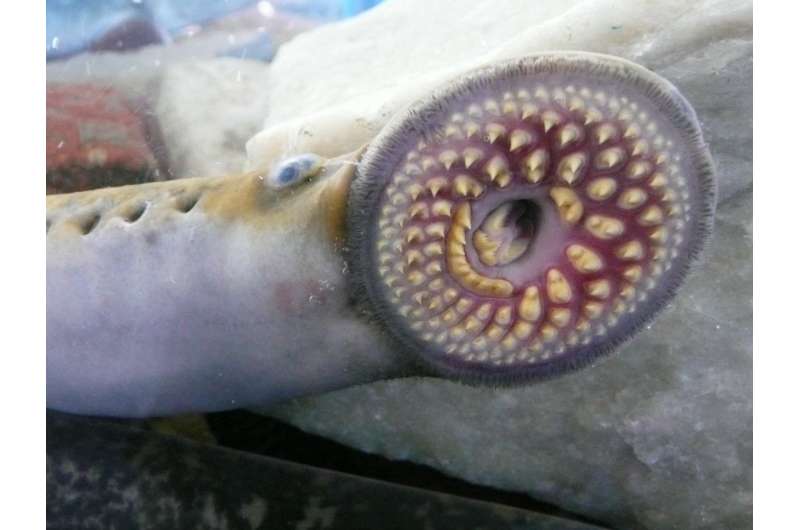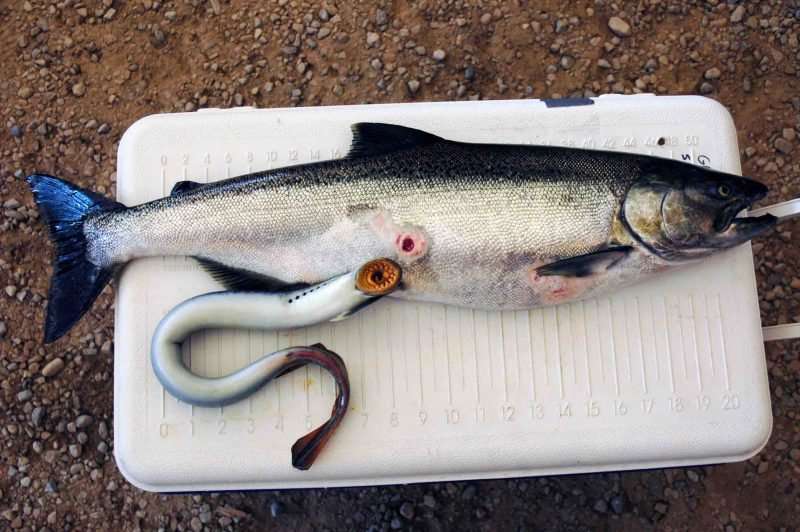Researcher studies vampiric silver lamprey

It's out there. Lurking, ready to feast on the blood of its victims, like the mythological vampire.
And it's real.
University of Manitoba biologist Dr. Margaret Docker in the Faculty of Science has been studying this group of ancient vertebrates for more than 30 years. When asked why she is attracted to such a creature, she says, "Well, I've always been a bit of an apologist for the underdog."
But this creature is not a dog. It's the silver lamprey, one of three species of the fish that are native to Manitoba. It's a vicious parasite, feeding on the blood of fish such as pike and sturgeon that are sometimes caught with scars of a lamprey's feast, or even with one still attached by its numerous rows of razor-sharp teeth.
"Anglers in Manitoba are probably familiar with them, especially in the Winnipeg River system," Docker says. "But they are not really a problem species here, since they take a relatively small amount of blood from large fish."
"If I had a choice between being eaten outright by a walleye or having my blood sucked by a lamprey, I'd choose the lamprey," Dr. Margaret Docker advises.
Another species, the sea lamprey, however, is a serious problem in the Great Lakes, where commercial fisheries have been working with both American and Canadian governments on a sea lamprey control program that is that largest vertebrate pest control program in North America. Barrier control dams have been built to prevent mature lampreys from entering streams to spawn, and lampricides have been created that selectively kill lamprey larvae in the streams.
Lampreys and another group of jawless fish appropriately known as hagfishes are very ancient, taxonomically speaking. They diverged from other vertebrates about 500 million years ago and are considered to be what our vertebrate ancestors looked like early in evolution.
In Manitoba, however, lampreys are less of an issue, despite their appearance and characteristics. The silver lamprey in Manitoba grows to about 30 centimetres in length. Its business end features many teeth; in fact, its tongue has teeth, too. Its saliva has anticoagulant and immunosuppressant chemicals, as well as anaesthetic properties so that a victim may not know a lamprey is attached.

"They are very efficient blood feeders," says Docker. "They are a very low risk to people because they generally don't attach to humans. It takes a while for them to really latch on, but we've heard of cases of long distance swimmers in the Great Lakes having issues with them."
Docker's research at the University of Manitoba is about pest management of the sea lamprey in the Great Lakes and conservation of the native species.
Docker notes: "The three species in Manitoba are benign and not really a problem. They have co-evolved with other fish here. They're not all bad."
"But 'know thine enemy,'" she advises.
And yes, Docker admits that "knowing" lampreys involves a certain ritual for lamprey biologists: a lamprey's kiss.
She's done it, and her grad students have done it.
"If I had a choice between being eaten outright by a walleye or having my blood sucked by a lamprey, I'd choose the lamprey," she advises.
But it's not for the squeamish.
Provided by University of Manitoba

















